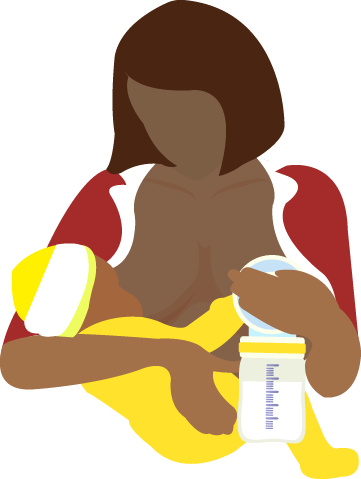Some mothers have such a strong let-down that the baby cannot handle the volume of milk.
If your baby chokes, gags, or pushes off of the breast a minute or two after beginning to feed, an overactive let-down may be the cause.
What can help
Most babies learn to handle let-down as they mature. Until then, here are some strategies you can try:
Allow your baby to come off your breast as she or he needs to.
Let your baby nurse until let-down. Then quickly remove the baby from your breast and catch the rapid flow of milk in a towel before latching your baby back on to feed. (To remove your baby from your breast while actively nursing, gently insert your finger into the side of his or her mouth to break the suction. Then position baby away from the nipple).
Hand-express or pump until you feel your milk flowing. Then start nursing your baby.
Hold your nipple between your forefinger and your middle finger. Or gently press your hand into the side of your breast during let-down to slow the rapid flow of milk.
Positions that can help
It may help to position the baby so that the back of the baby’s throat is higher than the nipple. This way the milk has to “travel” uphill during a let-down, which slows the flow. This can be achieved by:
A “laid-back” nursing position. You are lying back comfortably on a couch or pillows. Your baby is lying on top of you, directly tummy to tummy and upright. Your baby can then bob his or her head or you can guide your baby to latch.
“Football” or “clutch” position. Your baby is on your side with his or her back supported by your arm. The baby’s head is supported by your hand at the level of your nipple. You can gently raise your baby to your nipple to latch.
Source: John Hopkins Medicine
Link: https://www.hopkinsmedicine.org/health/conditions-and-diseases/overactive-letdown




